It’s late summer, August, and I’ve been making a few coyote scouting trips lately. Now, I’m always scouting for coyote, anytime I’m anywhere outdoors. It’s automatic and I can’t help it. Anywhere I am, I am always tuned in to coyote sign.
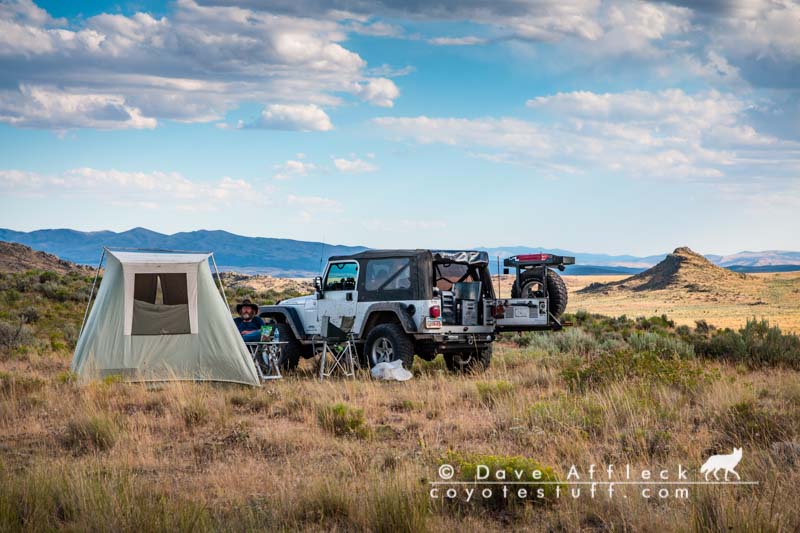
But the last few weeks I have been making trips specifically to scout for coyote to hunt in the fall. Last year our area suffered horrific drought and a long and prolific fire season. Followed by a severe winter with record snowfall. The prey base took a beating and so did the coyotes. I already know that coyote numbers in my area of operations are way down. I just want to get out and see just how bad it is and identify some good pockets if I can. So I’ve covered about 500 miles of dirt all together recently, just to see what I can see.
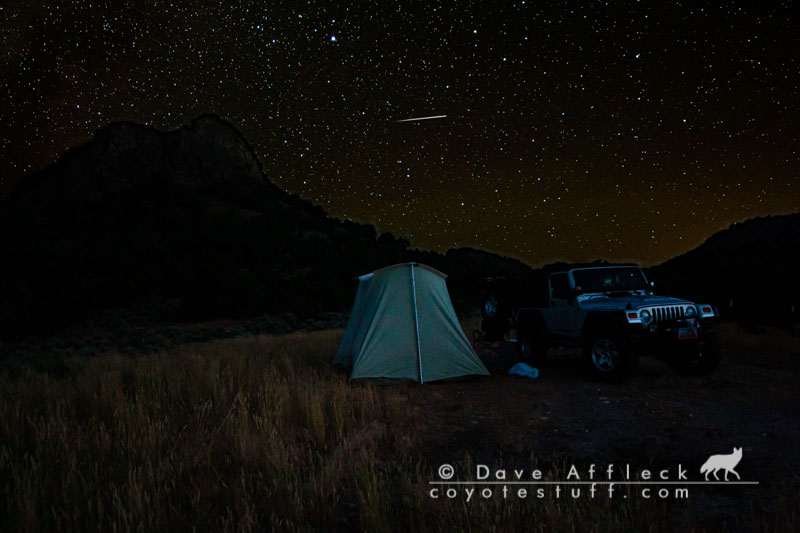
Things are looking grim in my area for this year. But, that’s not what I’m writing about today. Instead, I’m just going to ramble on about how I go about scouting coyote and hopefully it will be useful to some of you. After all, the most important part of successful coyote hunting, is calling where the coyotes are.
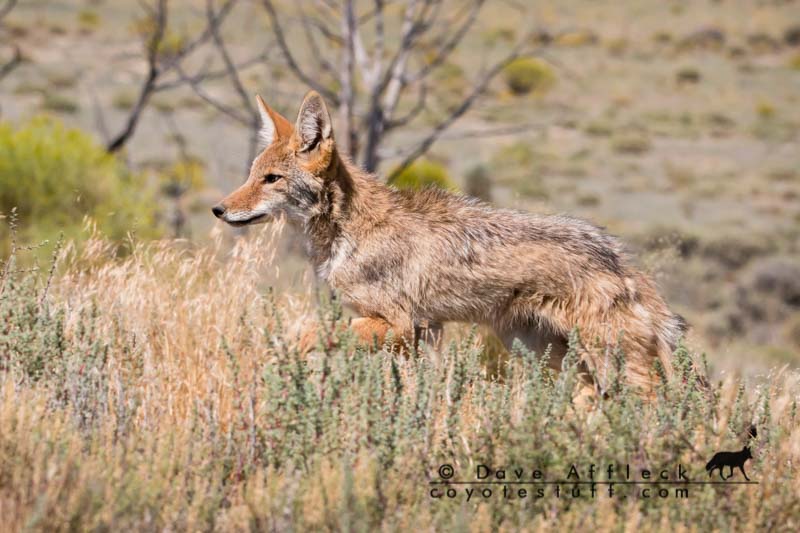
Scouting for coyote means I’m looking at anything and everything I can to give me the best possible idea of what relative coyote numbers are in a given area. As I said, I’m ALWAYS scouting for coyote. But especially when coyote hunting, I’m looking hard for indications of good coyote numbers and what might be the signs to key in on for that particular place and time.
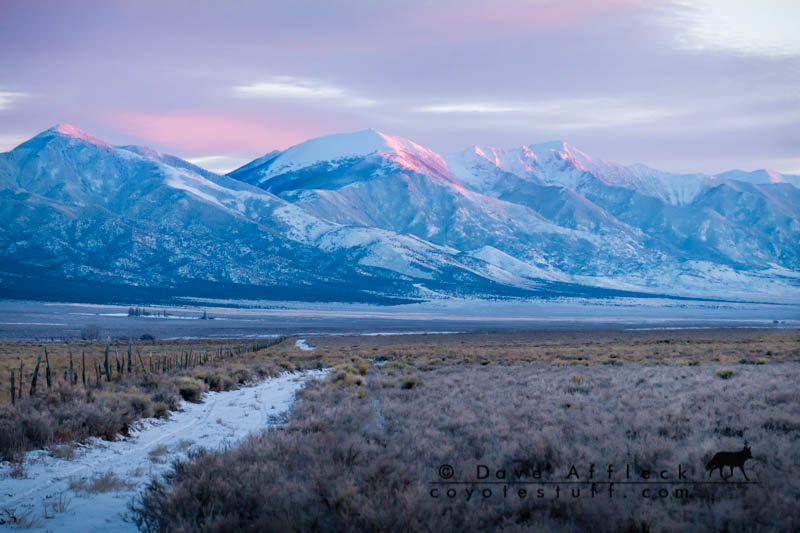
I don’t have to get out of the vehicle to be “scouting”. Indeed, the majority of my scouting is done from behind the wheel. I’ll talk more about that later. But getting out and walking a bit is the best way to get a more clear picture of conditions on the ground at a particular time and place.
Looking For Coyote Sign
So, what am I looking for, exactly? Anything that can give me a clue to coyote numbers. Including, but not limited to, tracks, scat, road kill, prey, prey sign, good looking rabbitat, hearing coyotes howl and seeing coyotes (dead or alive).
Putting together as much information as possible to get a picture of how many coyotes are around, what they are eating, where they are eating it, where they are spending their daylight hours, etc.
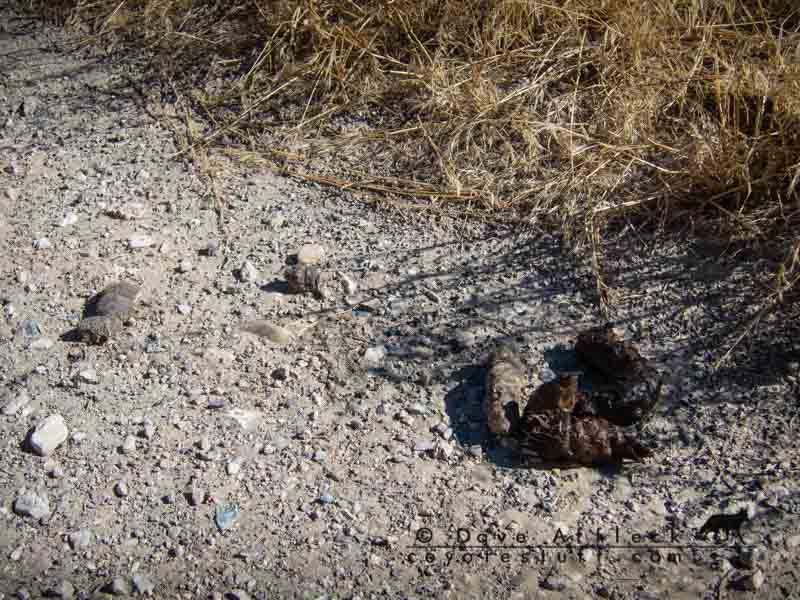
Coyote Scat
Let’s start with the type of sign I most often notice first. Scat. Poop. Turds. Or, as I call coyote craps – “ropes”. I started calling them “tootsie ropes” once many years ago and it quickly got shortened to just “ropes”. So, from here out, rope means coyote turds ha-ha!
I drive a lot of dirt. Year round. And I’m always scanning dirt roads for ropes. One thing I want to make crystal clear, is that there is no “always” and no “never” with coyotes. Nothing is certain, all the time. But, generally speaking, if you aren’t seeing many ropes on a two track, there aren’t many coyotes around and vice versa. It’s not the end all be all way of counting coyotes, but it’s a heckuva good first clue.
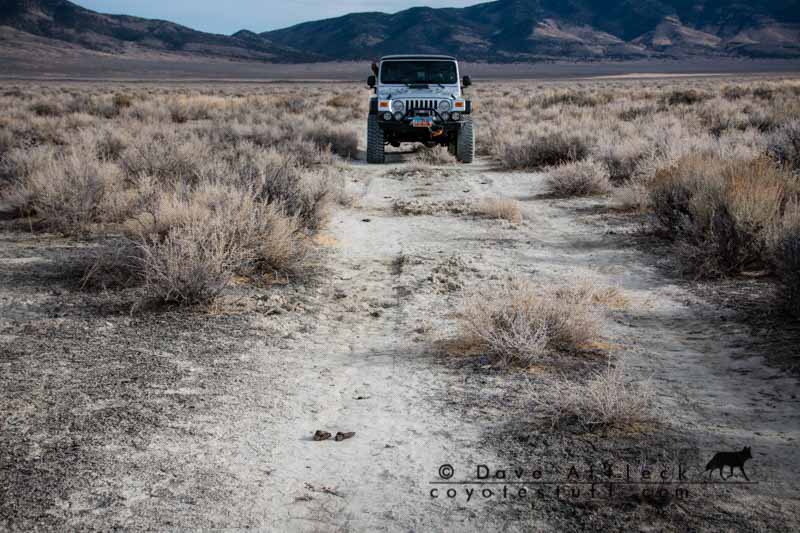

What do I like to see as far as rope density? At least one every half mile. Bare minimum. But I’ll often keep diving if I’m only seeing that many. Four a mile? That can get my interest. Especially if they are fresh. But when you get into a world class Coyote Crap Lane you’ll see a hundred per mile.
Rope gives me more information than just an idea of how many coyotes are crapping on the road, too. It can tell me what coyotes in the area are eating at that particular time. Or even what they were eating a couple months ago. I might be able to figure out where they are eating it. That’s valuable information!
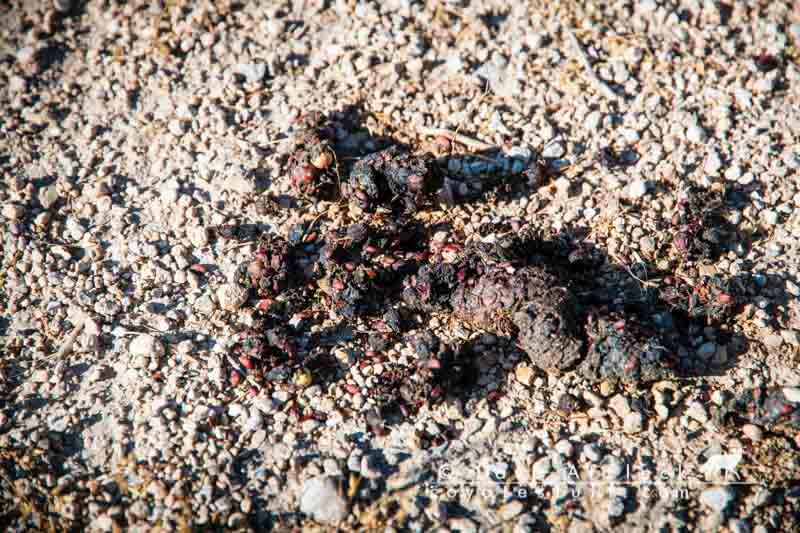
On my last scouting trip, we saw zero bunnies. None. And every rope we saw, had been eating grasshoppers. Will those coyotes still hang around that area after the frost kills the bugs? If not, where might they likely go? These are just a couple of the many clues we are looking for.
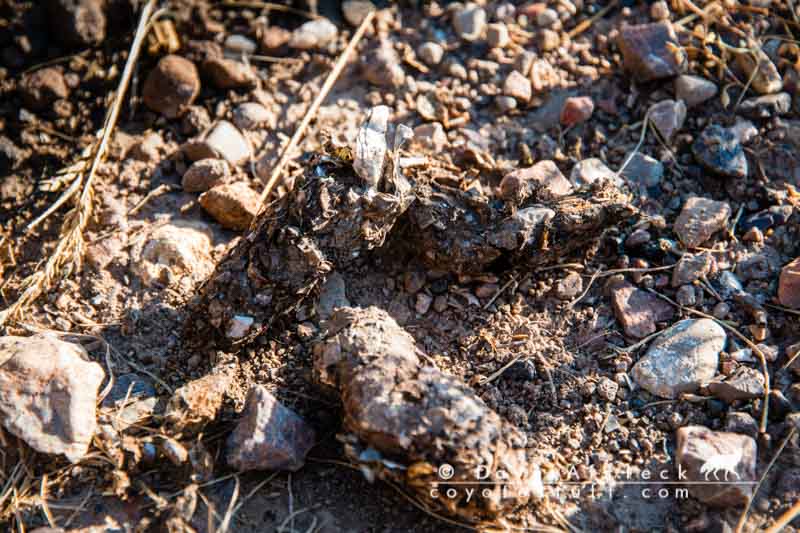
And just like tracks, the age and the size of the ropes give vital clues. Obviously, fresh coyote shit is better than ancient coyote shit. Lots of it is better than very little. The best places will have lots of rope from ancient to fresh. Often with collections piled up of various ages that appear to be a scent post. You know coyotes have been there often and are comfortable enough there to spend a little time when you see a pile of rope laid down over a period of time. That’s valuable information!

And best of all, once you get good at spotting ropes, you just do it automatically everywhere you go, all the time. You can cover a lot of ground in a day just looking for ropes. If hunting and not just scouting, we’ll often just keep driving until it starts to look roped up, then slow down and start calling. We might cover a hundred miles of dirt in a day of calling, only stopping to call where it’s roped up, skimming the cream.
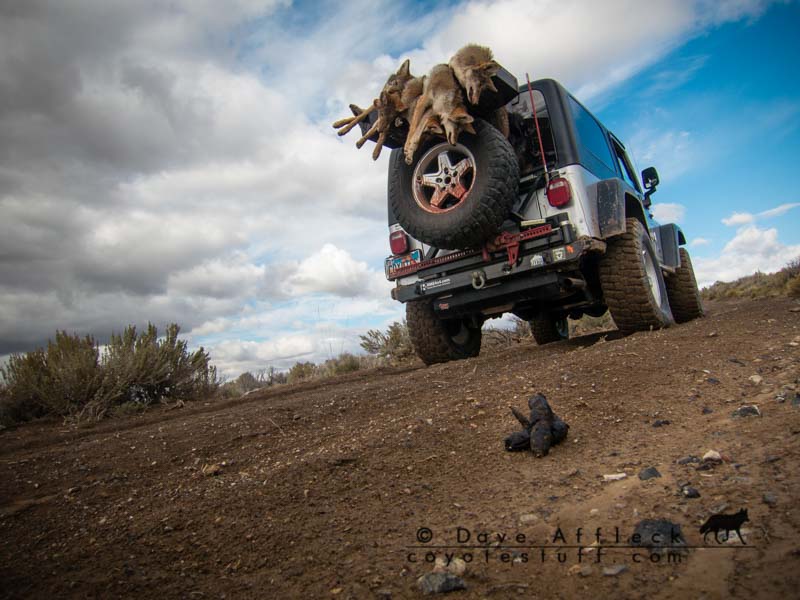
Coyote Tracks
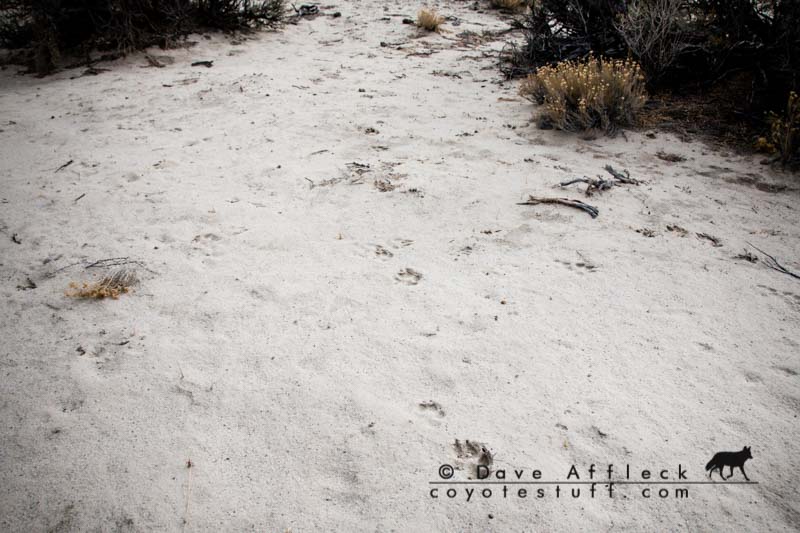
And then, of course, I’m always looking for coyote tracks. The ability to see coyote tracks and judge their age is highly, highly variable. It just depends on the type of soil, the weather, etc. If it snowed last night, it’s easy to spot track and know a track is fresh – even while driving. If it’s powder dry dust and the wind is blowing, it’s easy to know a track is fresh – even while driving. If it’s dry hard pan, that won’t show a track unless it’s wet, and it was wet two days ago, it’s hard to tell if the track is two days old or two weeks old or even older. You just use what clues you can see and make your best guess.
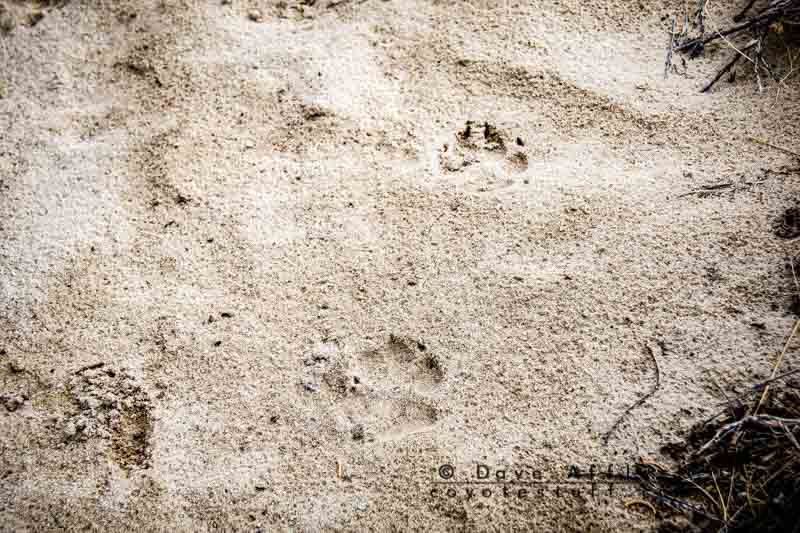

There is a lot of information available from looking at tracks.
The freshness of the track tells you when the coyote was there. The direction of the track tells you which way he was going.
Fresh tracks in multiple directions, tell me a coyote or coyotes have been coming and going, recently. That is worth way, way more than one old track.
Both fresh and old tracks, in multiple directions, tell me coyotes have been coming and going here for awhile.
The size of the tracks, if both large and small can tell me if there is a family group operating in the area. That’s a hot spot to hit early in the fall.
Tracks going in every direction, weaving and wandering, standing around, tell me coyotes are comfortable hunting in the area and not just traveling through.
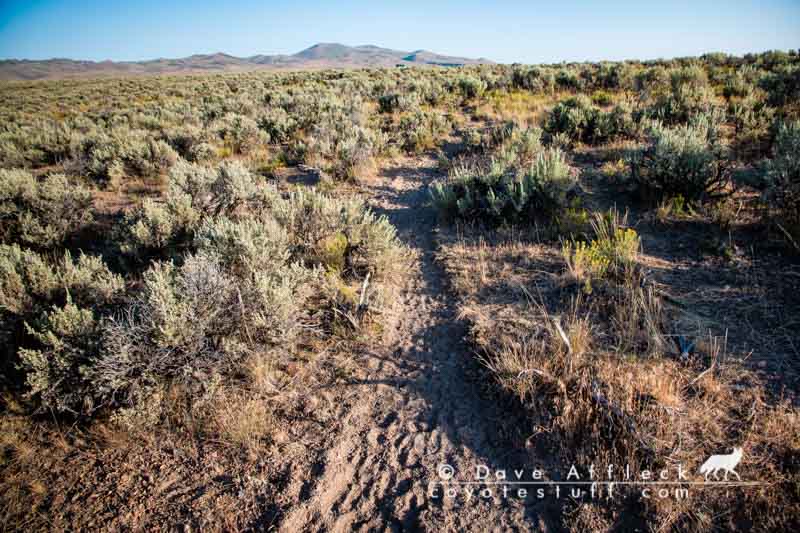
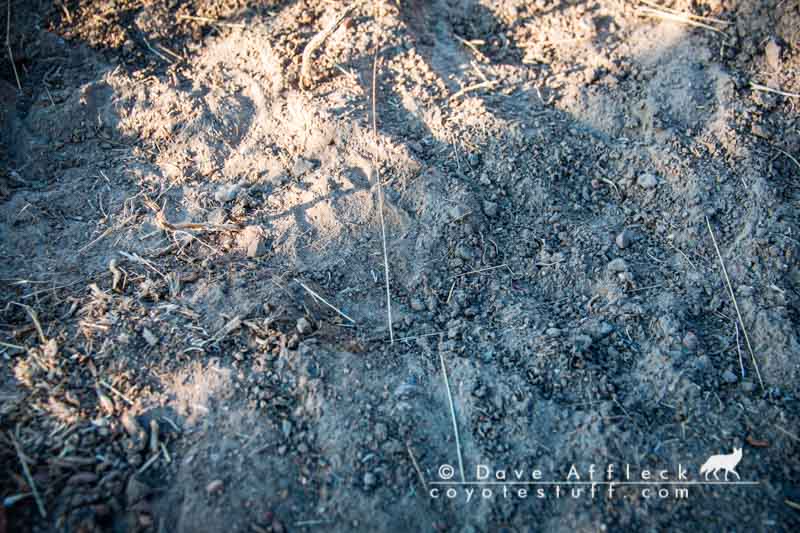
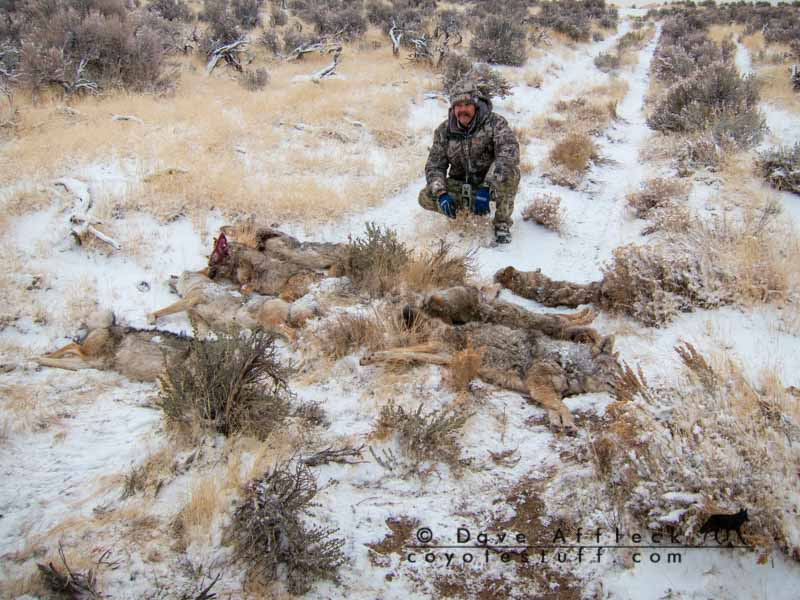
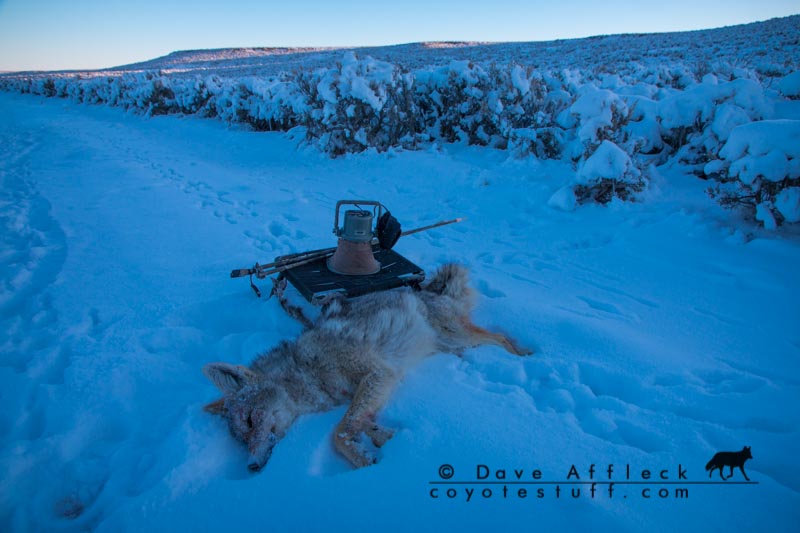
Coyotes Howling
One of the best types of coyote sign, is hearing them howl. Whether they decide to howl on their own or I howl first to get them howling back. Obviously, hearing them howl tells you exactly where they are RIGHT NOW. Next to actually seeing them, hearing them howl is the best information you can get.
It does take a bit of experience to know how many coyotes are howling at once. After you have been able to watch a pair howl and a family group yip howl etc., it gets easier. But most guys in my experience hear two coyotes howling and think it’s a dozen, ha-ha!
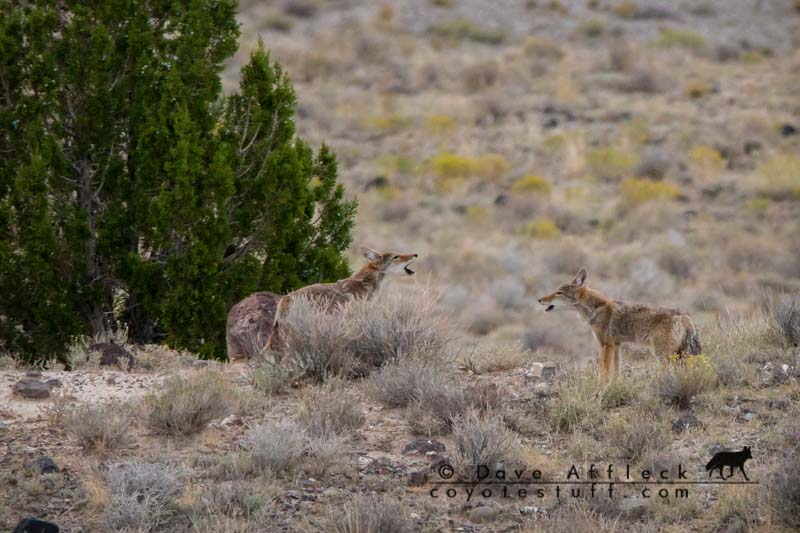
Sometimes, usually in the early mornings, a group will howl. Then another group will answer them. And then another group will answer. And then another. This is AWESOME! Always brings a huge smile to my face when I hear multiple group yip howls all at once. I know I’m into a lot of coyotes. Sometimes, I can imagine that a chain reaction of group yip howls is emanating out from us and stretching from Canada to Mexico, ha-ha!
All manner of tricks can be used to get coyotes to howl. From sirens to electronic calls to mouth calls to voice howls. My friend Scott Huber has convinced me that the realism of a howl DOES matter. And has further convinced me that howling with your own voice “can” produce the most realistic howls of all. I think my voice howls sound pretty bad, but I routinely get coyotes to answer my voice howls and have even howled in a couple on stand using only my voice. Scott routinely calls them in using his voice.
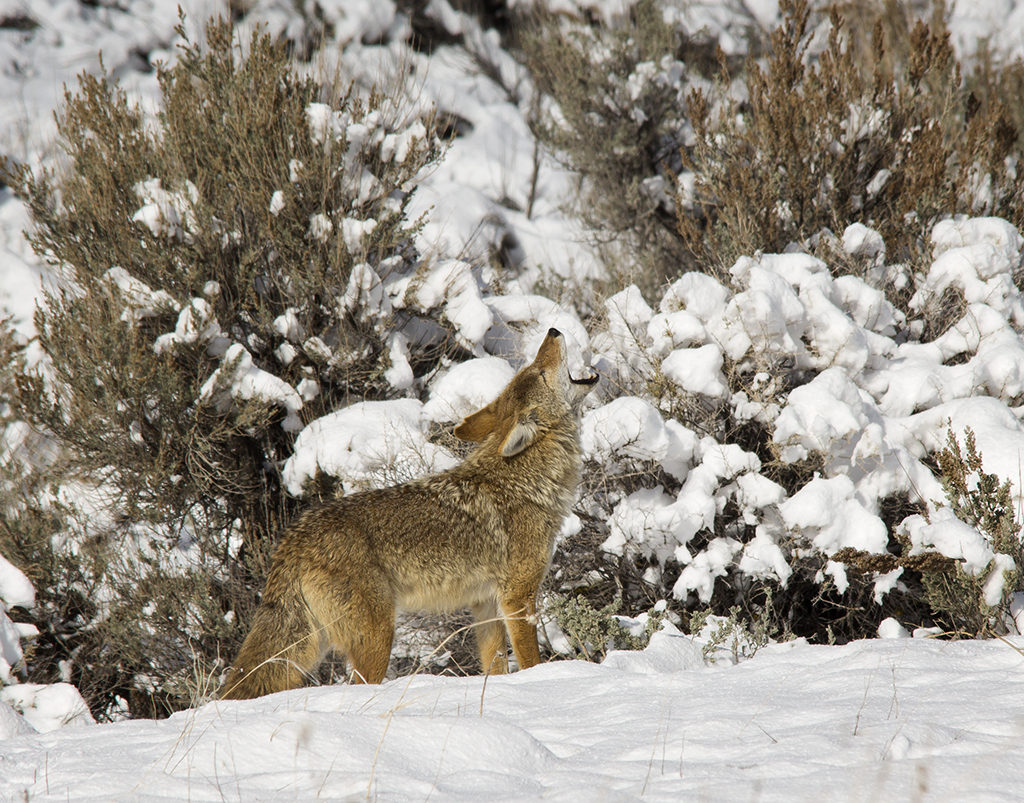
You can sometimes get coyotes to howl at any time of day. Other times, only from dusk till dawn. One thing I have taken notice of about that. And again, no always and no never, this isn’t set in stone. I have noticed that where I hear coyotes howling just as it is getting dark, is probably where they’ll be come first light. Where they might go, if anywhere, in between, is something else entirely.
But if you are driving around howling in the middle of the night to locate coyotes, my experience, where you hear them howling at midnight or 2am, is not as likely to produce the next morning and into the next day, as where you heard them right as it got dark. Your mileage may vary!
Overall, locating coyotes with howling is one of, if not the, absolute best ways to find coyotes and get a feel for how many are around. Whether actively hunting, or just scouting.
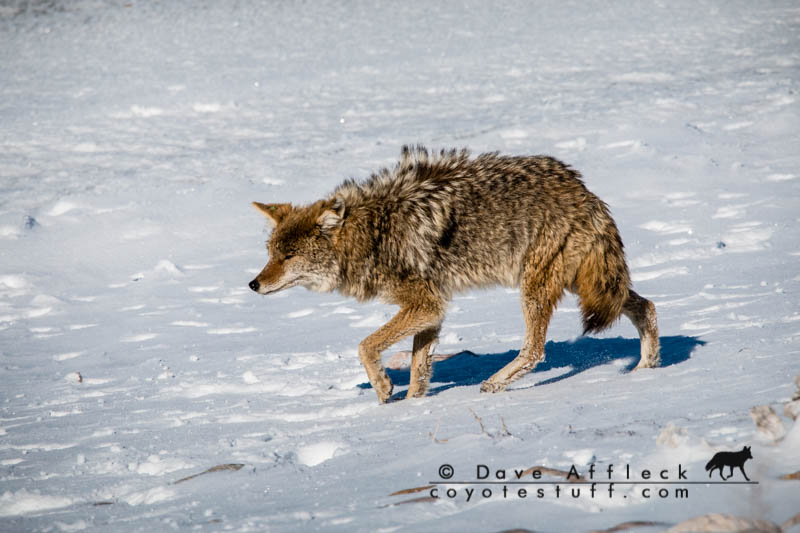
Time of year matters, a lot, as far as the number and types of responses you’ll get. In terms of early season scouting, in late summer and early fall while the family groups are still together, my experience in my area has been that the youngsters can’t keep their mouths shut at first light! If you issue a howl, or use an electronic group yip howl at first light, this time of year, and there is a family group within earshot, they WILL answer!
Bottom line, spending a night locating with howls is an excellent scouting method.
Where To Start Looking For Coyotes
So, you’re seeing lots of scat and track and hearing lots of coyotes howl. You’ve found them! That really is all there is to it. But, there are other clues, you can look out for, to help you decide where to even start looking.
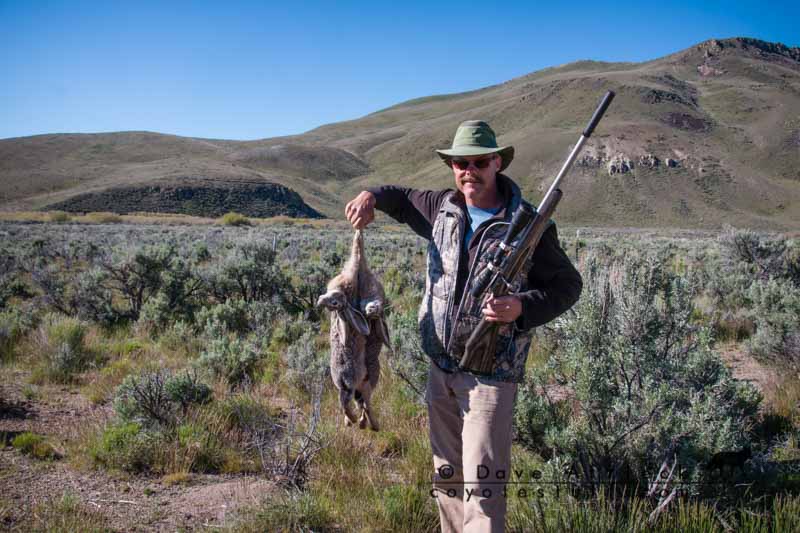
Because, Roadkill…
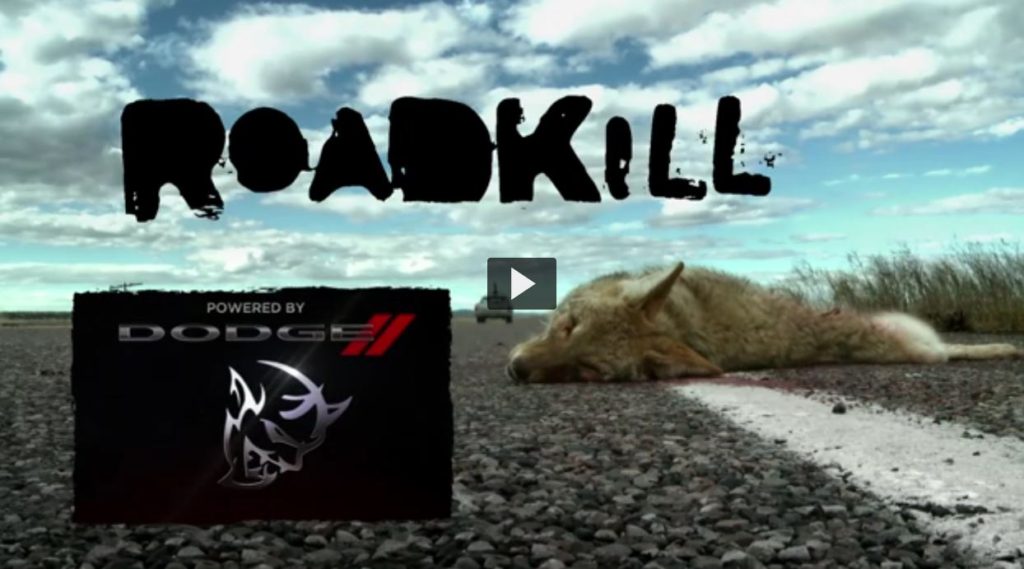
Because, Roadkill… If you watch the TV series Roadkill, you’ll get “because, Roadkill”. Otherwise, you won’t get it. No worries either way. What I’m getting at, is I pay close attention to road kill. Seeing a lot of coyotes dead on the side of the road is a great place to start. Likewise, a lot of dead bunnies which tells you there is at least a good prey base. Something a lot of old timers know, but don’t often talk about, is that often the best calling in a given area is going to be within one mile of the interstate. Think about it!

And I’m always on the lookout for just plain good looking rabbitat. The kind of terrain with food and cover that just screams coyote. Generally, this is going to be a fertile looking area. A sudden change to more fertile looking ground is often my first clue to slow down and start looking more closely. But, I don’t get too hung up on the type of terrain and vegetation, either. Coyotes are where you find them and if you start ignoring areas that “don’t look good” you might be passing up some good calling.
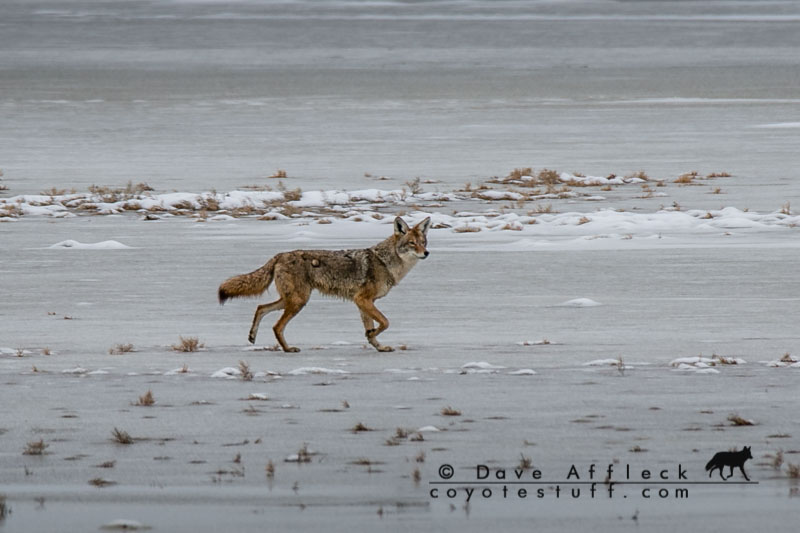

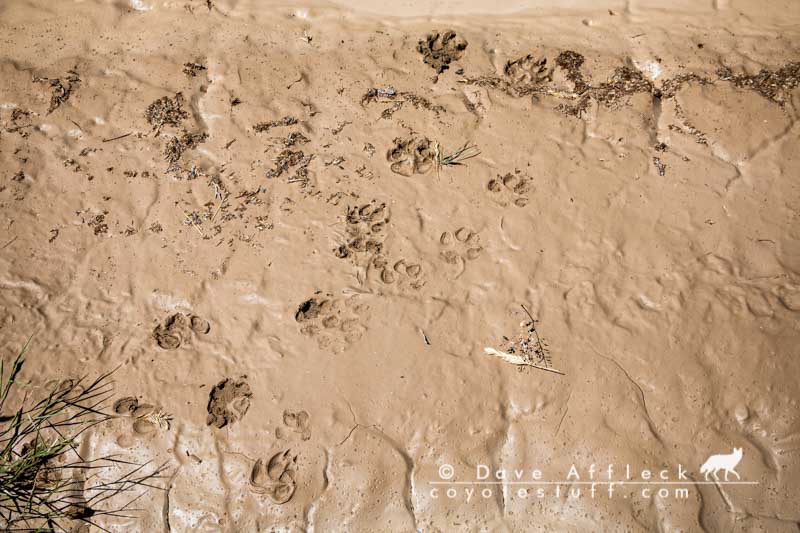
And of course, I rely heavily on what I call “topo scouting” before ever leaving the house. This is the study of topo maps to give me a good feel for the country I’m headed into. I wrote a whole article about topo scouting here.
I often get out in late summer and early fall to make a few stands with my camera. Calling in live coyotes is the best sign there is! You’ll have to use your own judgment as to how much you are “educating” them and how much of that you are willing to do. But calling them in just to take a picture and count coup is a ton of fun and can tell you more about the coyotes in an area than just about anything else.
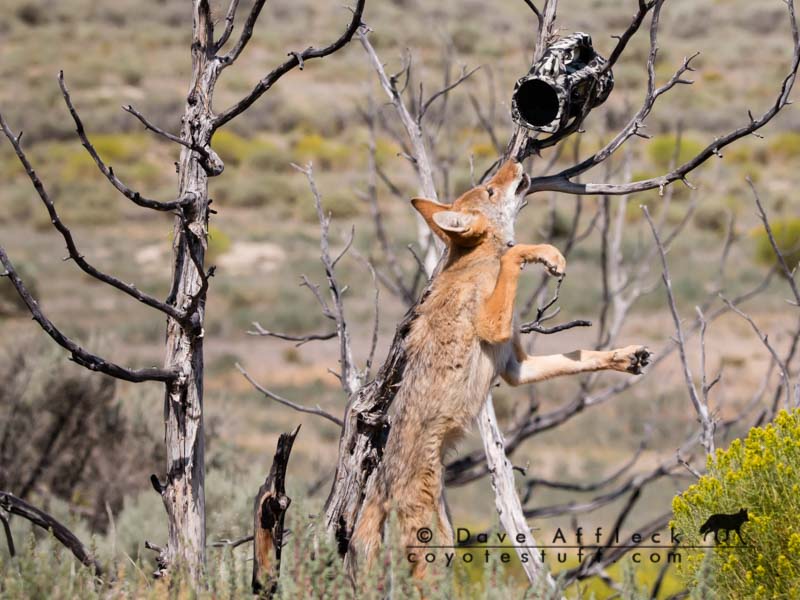
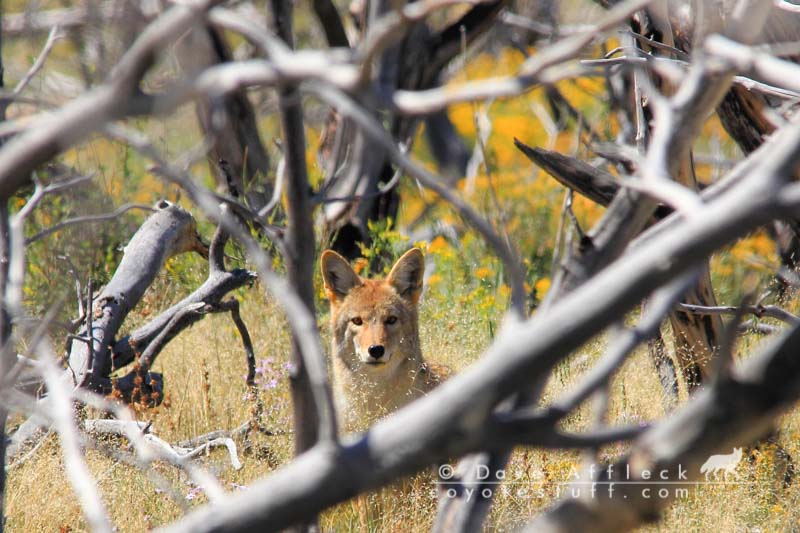
The number one best piece of advice for calling coyotes is that you have to call where the coyotes are. Paying attention to all the clues and doing some scouting either ahead of time or while on the ground hunting has paid many dividends over many years for me. I hope some of these thoughts are helpful to you too!
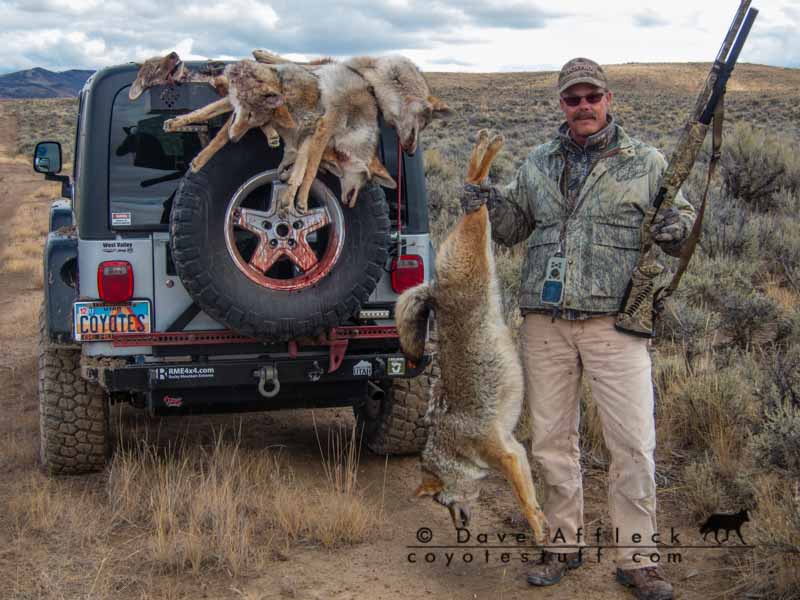


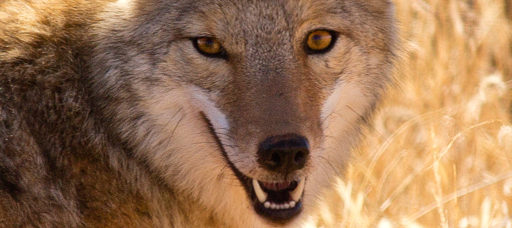
Dave,
The coyote population in my area has plummeted. I’ve had 7 trail cams out for a month, and got only 1 coyote on camera. I been out locating at night via howls…zero response. I’ve talking with land owners, and most have not seen, or heard a coyote since last winter. What happened to them all ? Will take your advice and try locating a family in the early morning. Thanks for the pics and the insight. Great article.
Jody, I can’t even guess what happened in your neck of the woods. I know what’s going on out here though – the effects of drought. This year has been great for precipitation and the range looks fantastic, it’s recovering quickly. Just not a whole lot of varmints lived to see it!
I wish I could post a photo of the tracks I just found this morning in the light snow we had overnight. One must’ve been sniffing around our garbage sometime throughout the night. My neighbor told me she saw one about a year ago but I’ve not seen one until a little over a week ago. Since then though, I’ve seen one 3 times. I’m guessing their numbers must be growing. I live in an urbanized area but there’s quite a bit of undeveloped pockets of land around us. We’ve got deer and wild turkey too. Kind of the best of both worlds I guess. Even though I’m in North Omaha, I can sit back and enjoy a few benefits of living in the country where I wish I was.
Coyotes definitely have no problem adapting to an environment like that. Even fully urban big city areas can have a healthy coyote population.